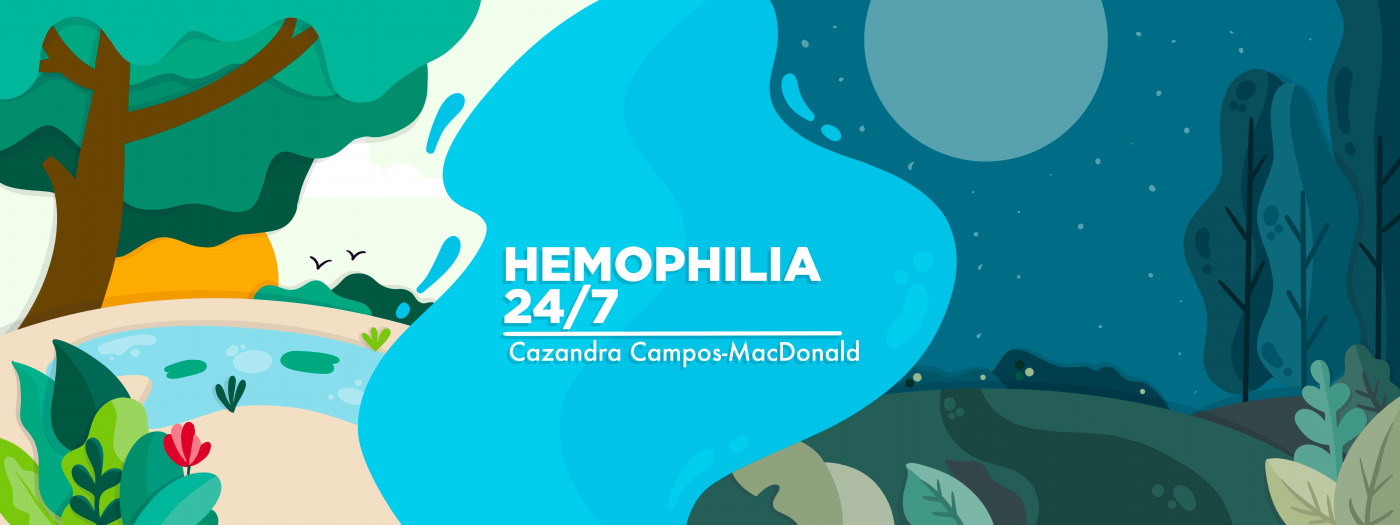Acknowledging the unseen, long-lasting effects of a bleeding disorder
We must offer compassion, not judgment, to those with an invisible illness

Alaska, Antarctica, and Greenland have something in common: They’re a few of the places where glaciers are present. A glacier is a large, slow-moving mass of ice and snow that forms over an extended period in areas where more snow accumulates during the winter than melts during the summer. Many don’t realize that around 90% of the icebergs broken from glaciers are underwater and invisible to the naked eye.
Bleeding disorders are like glaciers. The visible beauty of a person who looks healthy can be misleading. Complex health issues, such as the aftermath of internal joint bleeding, often aren’t visible to the world, but they can significantly affect a person’s health and well-being.
My youngest son, Caeleb, is a senior in high school. Many believe that because he hasn’t had an active bleed since February 2014, he’s living his best life and is unaffected by his hemophilia. Unfortunately, that’s not the case.
While new treatments have been life-changing for many in the bleeding disorders community, many still live with the aftermath of severe complications. New protocols and medications benefit those who struggle with bleeds, but the damage done to joints is irreversible and often painful to the point where it’s debilitating.
What we don’t see
This week is Invisible Disabilities Week, an annual awareness event that reminds the world that chronic illnesses can’t always be seen. When a person uses a wheelchair, crutches or oxygen, or otherwise has an obvious impairment, it’s clear they have a medical struggle. But how can the world accept that a 17-year-old who appears healthy can’t get out of bed because of excruciating pain?
It’s frustrating to have an invisible illness because there’s often an expectation that affected people must explain their situation, even though their health struggles aren’t anyone’s business. During this week of acknowledging invisible disabilities, I encourage readers to remember that not all battles are visible. It’s just as important to have compassion for people like Caeleb, who face unseen struggles, as it is for those who are more visibly affected by their illness.
Instead of judging someone for using an accessible parking space because they appear able-bodied, it’s essential to consider that they may be in pain or facing other hidden challenges. They may have some days when they can walk, but others when they can’t get out of bed. The bottom line is that we never know what someone is dealing with on the inside.
Many maladies are considered invisible, such as bleeding disorders and mental health challenges. Use this week to look at people through a new, compassionate, more inclusive lens.
Stop before judging. Educate yourself on an illness a friend or loved one lives with daily. Acknowledging the strength and resilience that people like Caeleb demonstrate in overcoming hidden adversity helps to foster a more loving, compassionate world.
For more information about events, programs, and materials related to invisible illness, visit the Invisible Disabilities Association’s website.
Note: Hemophilia News Today is strictly a news and information website about the disease. It does not provide medical advice, diagnosis, or treatment. This content is not intended to be a substitute for professional medical advice, diagnosis, or treatment. Always seek the advice of your physician or another qualified health provider with any questions you may have regarding a medical condition. Never disregard professional medical advice or delay in seeking it because of something you have read on this website. The opinions expressed in this column are not those of Hemophilia News Today or its parent company, Bionews, and are intended to spark discussion about issues pertaining to hemophilia.








Leave a comment
Fill in the required fields to post. Your email address will not be published.